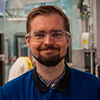Self-Driving HTE Labs for Synthetic Molecule Process Development
DATE
June 25, 2025
TIME
8:00 a.m. PDT, 11:00 a.m. EDT, 16:00 BST, 17:00 CEST
Overview
Takeda SMPD has significantly built up its high-throughput (HTE) and automation capabilities over the last few years around the Unchained Labs family of tools and devices that integrate well into a complete solution. Our ultimate vision is to design and implement self-driving labs (SDLs) to carry out self-optimizing workflows. Process development and optimization frequently involves exploring wide parameter spaces, making these iterative algorithm-guided SDLs ideal for such optimizations, especially if coupled with automated HTE synthesis platforms.
As such, we herein present our vision for fully self-optimizing HTE workflows, with the ultimate goal of creating SDLs with workflows optimized for a variety of general applications needed in synthetic molecule drug development. To illustrate this process, case studies will be presented, highlighting both their successes, as well as the limitations of our current hardware and software tools.
Key Learning Objectives:
- Creating a successful Self-Driving Lab
- Impacts on research through case studies
- Future directions for improvement
Who Should Attend:
- Laboratory managers/directors
- Synthetic chemists
- Self-driving lab enthusiasts
Brought to you by:

Speakers
 Adrian Ramirez Galilea, PhD
Adrian Ramirez Galilea, PhDAssociate Director, Automation & HTE,
Takeda
 Andrew Kukor, PhD
Andrew Kukor, PhDAutomation Scientist,
Takeda
 Dimitrios Chatzinikolis
Dimitrios ChatzinikolisRobotics Engineer III,
Takeda
 Rick Sidler, PhD
Rick Sidler, PhDDirector, Field Automation Scientists,
Takeda
 Kelly McSweeney
Kelly McSweeneyContributing Editor,
C&EN Media Group
Registration
*By submitting this form, you agree to receive more information on related products and services from the American Chemical Society and its sponsor via email. You understand that you can withdraw your consent at any time. ACS takes your privacy seriously. For more information, please see the ACS Privacy Policy.
© 2025 American Chemical Society, 1155 16th St NW, Washington, DC 20036, USA. View our Privacy Policy
